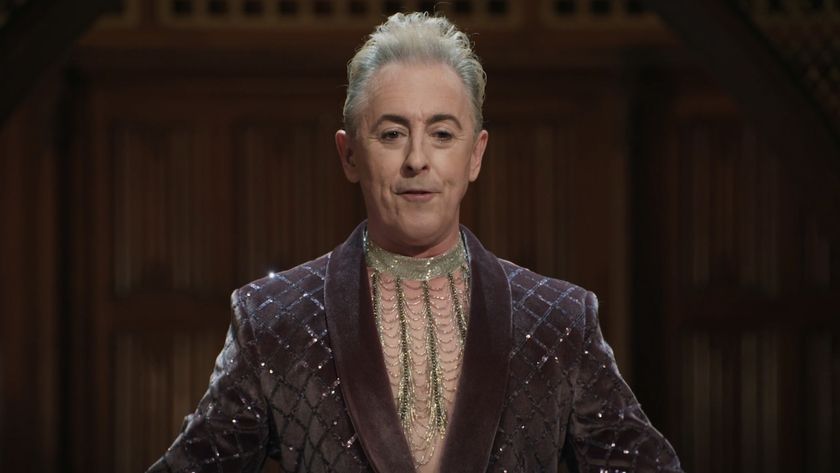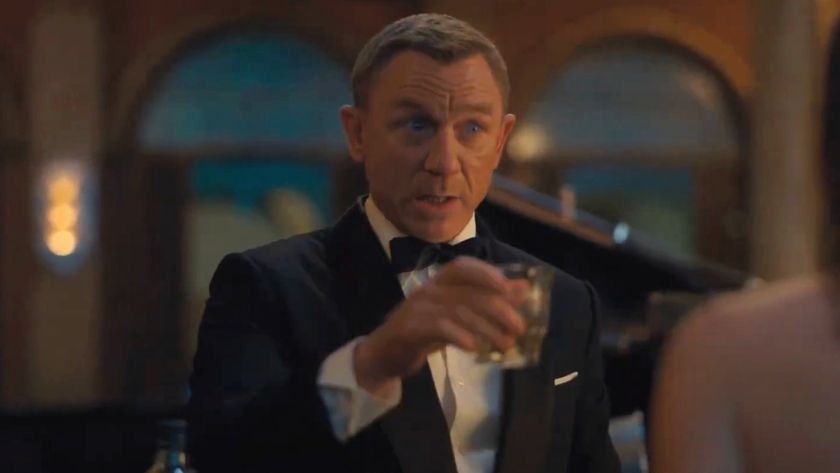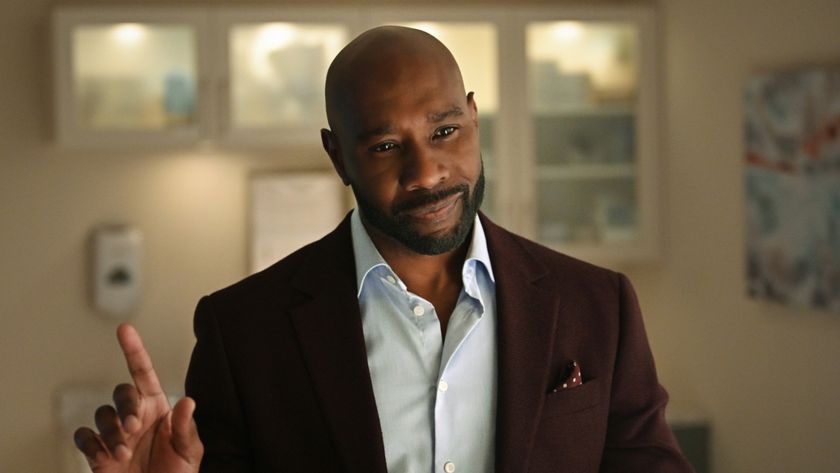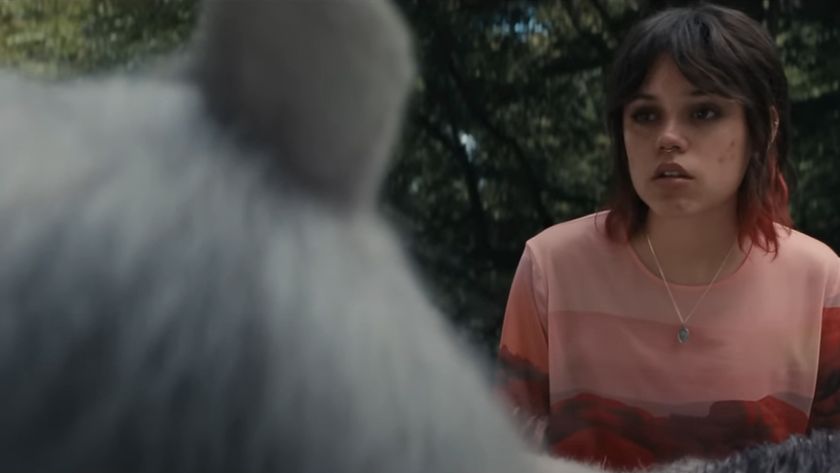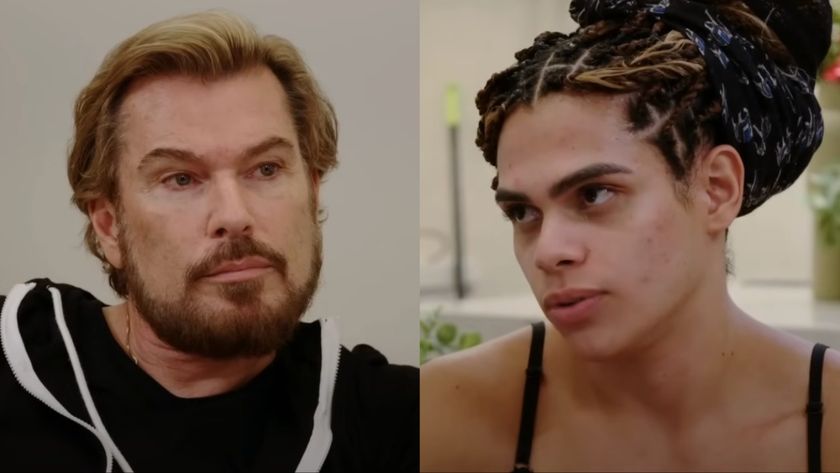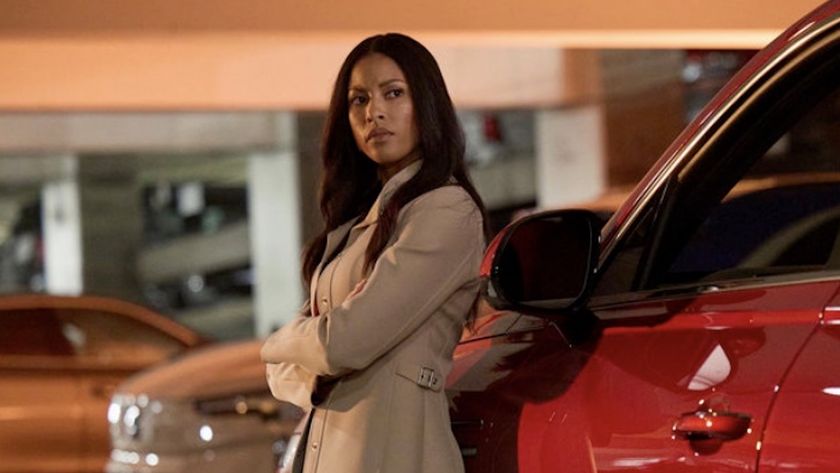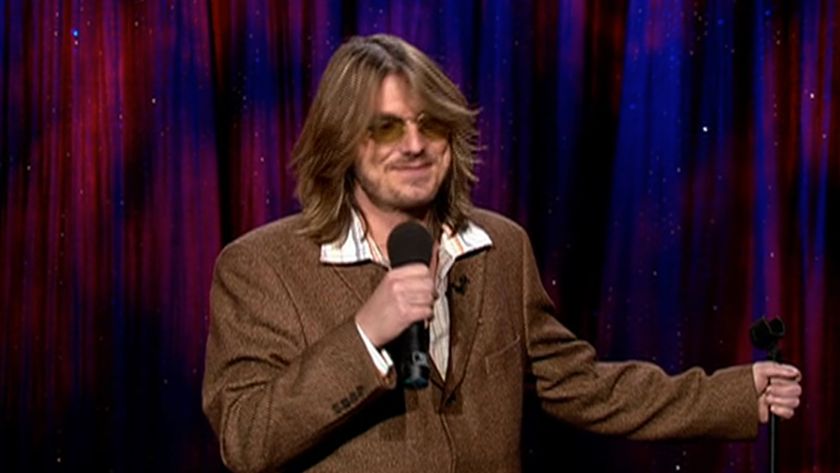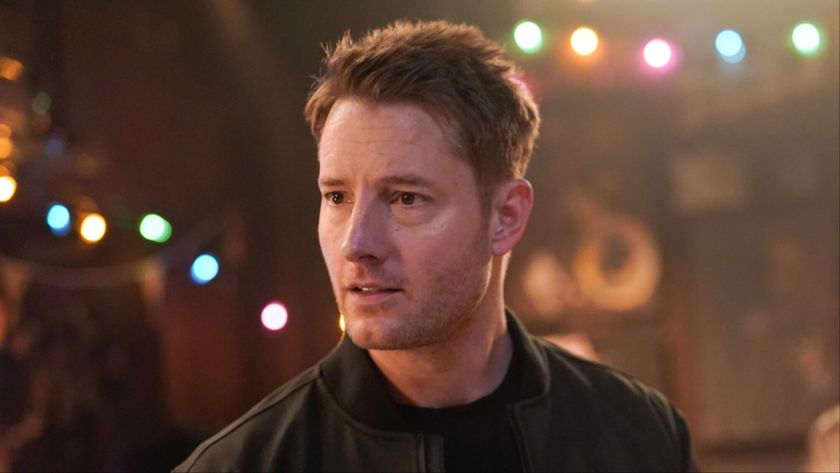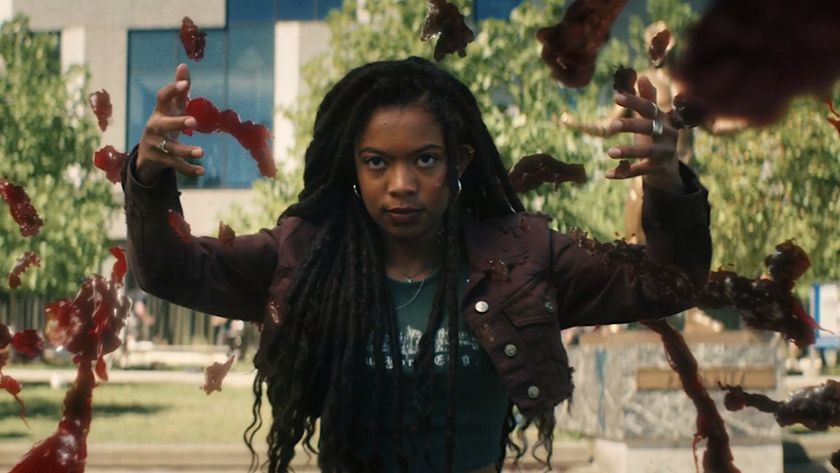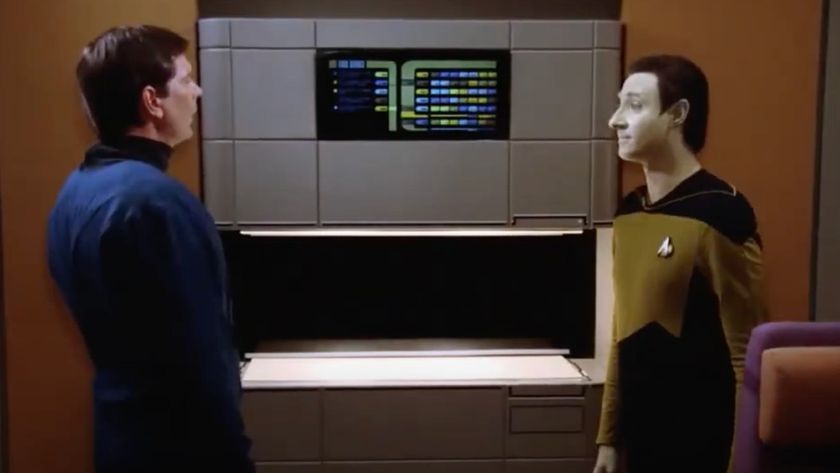NYFF: Persepolis

It’s true: the New York Film Festival is coming to a close today. It’s been a crazy four weeks for me—two weeks of the festival, four weeks of press screenings—seeing more movies in a week than I saw all summer. Good movies, too, from the grim and breathtaking 4 Months, 3 Weeks and 2 Days to the thrilling No Country for Old Men; the delightfully weird Go Go Tales and Margot at the Wedding, the delicate and beautiful The Diving Bell and the Butterfly, and finally, finally seeing Blade Runner. Even the press conferences at times were shows in themselves; Brian DePalma took care of that one handily.
I’m out of the Walter Reade Theater for good, but tonight audiences will relish the closing night film, Vincent Parranoud and Marjane Satrapi’s Persepolis. An animated coming-of-age story about an Iranian woman who currently lives in France, it’s the kind of story that might feel too familiar if it weren’t such a visual revelation. Based on Satrapi’s graphic novel of the same name, Persepolis employs good-old two-dimensional animation to brilliant effect, visualizing Marjane’s changing world with a fluidity and grace only animation could accomplish.
“A cartoon?” you may sniff. “How dare they?” wrote Stephen Holden in his wrap-up of the festival’s final weekend in The New York Times. It’s that kind of attitude that, frankly, infuriates me (though to be fair to Mr. Holden, he admitted in the next sentence that Persepolis “eroded my longstanding resistance to animation.”) Though it’s been defined by fast-talking wabbits and four-fingered mice for its entire existence in our country, animation has a double-edged power that live-action films never achieve. All films take their subject and personalize it; blow a face up on a screen and it’s more than just a person, but an important person, one worth figuring out. Animation, however, can simultaneously generalize that person; a series of lines and shadows, while a character perfectly defined, is also an abstraction, a vehicle simply waiting for you to project yourself into it.
Too film school for you? Fair enough; Satrapi probably said it better herself: “It’s something very abstract in the drawing that anybody can relate to.”
Persepolis also benefits from a universal story—childhood during wartime—that is epitomized by Anne Frank but has probably been with us since Helen of Troy caused all that trouble. The film is based on Satrapi’s best-selling series of graphic novels, chronicling her life from a child in 1978 to a 24-year old in Paris in 1994. Satrapi was an elementary school girl when the Islamic Revolution began in the late 1970s; thrilled to be escaping the rule of the despotic Shah, Marjane’s parents support the revolution until they realize they have merely replaced a single tyrant with a horde of them, upholding Islamic rule of law at cost of all freedom and peace. Marjane is a spirited girl who calls her teachers out on hypocrisy, asks aloud why the girls in school must be fully cloaked in the hijab, and rocks out in her bedroom to Iron Maiden. During the Iraq-Iran war her parents send her away to school in Vienna, where she spends several misspent years before returning, defeated, home. There she struggles to fit in with the new reality of life in Iran before she realizes she must leave the country for good.
For Western audiences unable to recognize Iran on a map, there’s a lot to digest about the Islamic Revolution, and Persepolis does a nice job of explicating global politics without getting bogged down. Seeing the revolution and subsequent war through a child’s eyes helps enormously; for Marjane it’s not important how much the rule of Islam is upheld, but it’s crucial to know whether or not Michael Jackson is cool. The film does a wonderful job of showing Iranians as real people, who break rules when they can get away with it and largely see people, not politics. In an era of “there are no gays in Iran” and the axis of evil, it’s crucial to get such a glimpse into the country, even if the film ends in 1994.
The best part of Persepolis, of course, is its animation, which is largely in black and white and is fearless in its ability to shift between scenes, letting certain things melt into others (waves in a dream become stripes on a bedsheet, for example) without going off the deep end of abstraction. All the characters in the film are fairly realistically depicted, though with a simplicity that, as Satrapi points out, keeps them simply human rather than “Iranian,” “Austrian,” and so forth. Marjane ages beautifully as a character, and the animation powerfully draws the viewer into her internal thought process, visualizing dream sequences and fantasies with great elegance. Perhaps most importantly, the animation makes Persepolis an extremely subjective film, depicting everything from gun battles (a man, once shot, freezes in tableau in mid-air) to first love (a car floats through the streets of Vienna) with the same distance from concrete reality. As with any personal story, what really happens is less important than how it felt, and Persepolis tells its story both clearly and emotionally, making plenty of room for the audience under Satrapi’s veil of memory.
CINEMABLEND NEWSLETTER
Your Daily Blend of Entertainment News
Persepolis is funny and self-deprecating (how else can you talk about your teenage punk phase?) and also incredibly sad, demonstrating ineluctably, over and over, the human consequences of war. Satrapi clearly has thoughts about what harm the revolution has done to her home country, but her film is overall a human one, and is much more about the simpler challenges of growing up than the greater obstacles Iran faces today.
Satrapi and Parranoud joined the press for a conference following the film, where Satrapi wowed me with her command of Persian, English and French—sometimes simultaneously.
You’ve been living with your old self for a while now—have your feelings about yourself changed over the course of it?
Satrapi:I don’t think I would do anything differently. Of course when you watch the movie again, it’s always like ‘Oh, we could do that better.’ At the same time, we did the best we could at the time we did it, so it’s without any regret.
Vincent, coming to work on this, what did you bring to it that made it a collaboration?
Parronaud: I didn’t know if I could bring anything new because, as Marjane said, she has already taken the distance with her whole life. So we took this project as something independent from the comic. Of course, we read the comics again, we had the story, we decided that we were going to start something new out of the story, to find a new territory. That is a big part of this movie, that the movie and the comics are the same, and at the same time they’re so different.
Did you read comics or graphic novels growing up? When did you decide you wanted to write them?
Satrapi:Actually, no. the only comic I read when I was a child was—there were these American comics coming in Iran, and one of them was called Dracula. […] I started reading it, and I don’t know why, but I decided that it was written in the comic that to become Dracula [my cousins and I] had to eat raw chicken. My cousin and I ate raw chicken the whole summer, and as a result we got worms at the end of the summer. That was an issue with comic books. I started really reading comics when I came to France…[someone] was reading Maus by Art Spiegelman. Before that I had the idea about comics that everyone else has about comics, it’s really for kids or adolescents or retarded adults. Then I read Maus and it was like a slap in my face, and I realized, it was just a medium like any other to express yourself. In my mind the images and the text, they are not separated. It became an obvious way to express myself.
Were you ever afraid to tell your story, for your sake or your family’s?
Satrapi:For my family, no. To myself, yeah. But you know what you’re doing. I’m a little bit stupid when I do this stuff; I don’t understand the result of things. I knew there was going to be something. The fear comes through the duration, and of course you have fear when you make a project like that. Some people may not be happy about it. The time that I got most scared about this project, actually, was when I made my first book tour, and they sent me to Texas. That was the beginning of the war, and I was talking about my book, and I was really angry with the war against Iraq. I said to myself ‘I have to cool down. I’m in Texas, they have shotguns and all of that.’ At the same time I was talking, I was saying ‘Jesus Christ, if one of those cowboys shot me, I’m going to finish as a martyr of Islam.’ [Laughs]
How did you choose what to keep from the original story and what to get rid of?
Parronaud: I will answer because I also come from comics and cartoons. It’s a wrong idea to say the comic is the small brother of animation, like it’s the storyboard of animation. When we started working on that, and we had the story, but we had to create everything around that. In the cinema you have the movement, you have music, you have sound, the whole thing. We couldn’t think about it in the same way. The only thing that is left from the comics is the characters.
Did you have a certain viewer in mind?
Satrapi:I think that anybody can see the movie. I know that very small kids, 5-6 year old kids, they have watched the movie and they have understood some stuff. I was pretty amazed actually; they showed it in a school in France, and then I had to go and talk with them. I thought that the questioning would be not very interested, but the kids are so interested in the comic. I just wouldn’t believe that nine-year old French kids would be interested in the subject like that. I think that everybody can watch it. I know they say that [things in the movie are not for kids.] But what’s better—movies that say to kids they have to smoke, or playing games where they kill 500,000 people in half an hour? I don’t think it’s a big issue.
Will there be a dubbed version of the film?
Satrapi:It depends on the countries, actually. For the English-speaking [version], we have a dubbed version that we made ourselves. It is not like it was sent to some studio. The same work that we made on the French version, directing the actors, we did exactly the same thing for the English version. I’m very satisfied with what I have seen.
Are you still in touch with any of your friends in Iran?
Satrapi:Unfortunately the situation in my country is such that when they could leave, they left. Unfortunately I don’t have any friends there anymore.
How did Kathleen Kennedy come to be involved in the project?
Satrapi:At the beginning, when we were talking about the project, I got an e-mail from Kathleen Kennedy—she wanted to buy the rights to the book. And we wanted to make the movie in France, so we forwarded the e-mail to the French producer. She’s a very extraordinary woman—she believed in the project, she loved the script. She [speaks French], so she read the script, and she was very much active. She came into this project, and she really gave us an incredible amount of support from the beginning.
Were you tempted to add to the end of the film?
Satrapi:No. The fact is that I had no interest in telling about myself—I am not so self-involved to say ‘I’m so interesting.’ The reason I put it in the first person is that I don’t have any pretension of being a politician or sociologist or historian, so that it’s a one-person point-of-view. It’s about how the situation changed in one country, and how I had to leave it. It’s not really a story about my life, but how things changed, and me as a person who was there. After 1994 I didn’t live in Iran anymore, so whatever point-of-view I would have about Iran is second-hand information, which I wouldn’t trust. When I came to France I remember what they were saying about Iran, and it was so wrong, so why would the information be right now? Talking about that would be off the subject. I have the life of everybody else [now].
Are you still in love with pop music and rock music?
Satrapi:Pop music not so much. Rock music yes. For example I don’t listen to Iron Maiden at all—I think it’s really shit music. But you need this kind of music [in the film] because it’s so representative of the moment. Like ‘Eye of the Tiger,’ that is one of the worst pieces of music—it is so vulgar. It’s the music of a certain time, and it really meant something to everybody. If it were our taste we would have put in much more Iggy Pop or something like that.
How close is the character of the grandmother to your real grandmother?
Satrapi:I [toned] her down really, because in real life she was much more than what you see in the movie. She was very straight, extremely honest—too honest. She would say things that it was just incredible and unbelievable that somebody would say. It looks very much like her. […] If there was really one person that was a big inspiration for me in my life, it was my grandmother. She was a person who didn’t have any morality. She had lots of ethics, but she didn’t believe in morality. She always believed that morality gives you duty and doesn’t give you any rights. It’s and expression of ethics, to have personal thinking—how you yourself are in the world and how you as a human being think, without them telling you what to think. That’s something that was a big inspiration for me, and for my whole life afterwards. How did you decide to cast Danielle Darrieux as the voice of the grandmother?
Satrapi:For the grandmother, they said you need a woman that smarts, she likes to laugh and all of that. It was very important o have her, because she’s extremely bright. I remember when we were actually working with her, all the bad words she kept repeating like ten times. She liked to say ‘I have to know my text back and forth,’ but the thing was she was only repeating the bad words. [Casting her] was a choice from the beginning.
Who is the English voice cast?
Satrapi:We have Gena Rowlands for the grandmother; that is the other lady who can play this role. Catherine Deneuve has her own role [Marjane’s mother], Chiara Mastrioanni has her own role [Marjane]; for Uncle Anoush we have Iggy Pop. He has the deep voice, this very masculine deep voice. For the father we have Sean Penn. It was very amazing to work with the French actors, but it has also been amazing to work with these people. They have been so generous and so incredibly into the story. They just wanted to be part of it. It was just amazing, amazing to work with them.
How are you dealing with the American ratings system, if you want kids to see it?
Satrapi:We have a PG-13, thank God. […] I think they were nice to us.
Were there things different between the French voices and the English voices?
Satrapi:Of course it changed. You cannot ask an actor to play some role in the same way that it has been played, otherwise why pick Gena Rowlands? If we choose her it is because she has her own character, and she has her own method. Like Sean Penn and Iggy Pop. It was extremely tough actually; the voices were recorded in the beginning, so we worked on these voices for three years. We were so used to these voices, that of course when you have another person, it’s not the same. At the same time I think that the person who sees the English version of the movie is not going to see the French version and make a comparative study. I’m very satisfied with it. Does it change? Of course it does. It cannot be the same. But it’s something else, and we’re satisfied with it. Vincent: This English version is something that we wanted to make the beginning. It is not like at the end we decided ‘Now we’re going to have an English version.’
Will the DVD have both versions?
Satrapi:Yeah! Why not?
How do you think the movie will play here, given the current situation in Iran?
Satrapi:I don’t think the movie can change the world, but at the same time, I hope that if people watch this movie and at the end they say ‘That could be me,’ that is the thing that I want the most. People can start thinking that these people are just normal people like them, that they have brothers and sisters and mothers and fathers and hopes and loves and whatever. This movie is a very humanistic movie. It’s a movie about love, about family, about human beings. If we understand that, if we watch this movie and say it’s about a human being, and this human being could be, then we have reached our goal. It’s why we made an animated movie and not a live-action movie. The action in a certain or practical place with certain types of people, in the end it becomes the story of these people who are far from us, we cannot relate to this, they are not like us, etcetera. It’s something very abstract in the drawing that anybody can relate to. Also when you see the background, we didn’t make anything exotic. It can be Tehran, it can be Cincinnati, it can be any big city anywhere. We did that on purpose, because we wanted everybody to be able to relate to it. It’s very odd; since the movie came out we are going everywhere talking about love and peace. We have sort of become hippies. If we’ve started becoming hippies, then something is wrong in this world.
How has the Iranian government reacted to the film and the books?
Satrapi:To the books, nothing. To the movie, they reacted before they saw the movie. […] Of course they reacted, of course they don’t like the movie, but what can I do? This is it. Saying that, they called the movie ‘anti-Iranian,’ and I think it’s the contrary. You don’t watch this movie and go ‘Oh, let’s go bomb the Iranians, those scary people,’ you have some empathy for these people.
This movie is also an anti-theocracy movie, which is interesting for Americans because we are on our way to becoming one…
Satrapi:If you are not there already. If it’s anti-something it’s anti-fanaticism and anti-dictatorship. Even if there is no religion, the schema of any dictatorship in the world is the same: it’s to put the people in the situation of fear, and then from the second that people are fearful, you can intimidate them and do anything with them. […] I don’t want to resist theocracy; we had the same problems during the Shah, and that wasn’t a theocracy, it was a dictatorship.
Parronaud: It’s not like [Marjane] is trying to solve her problem with her country of origin. It goes beyond that. It’s much more universal than that. In 10 years, when Iran is not going to be in the front of all the papers, I hope that this movie will still have its value. It can be anywhere, actually.
Satrapi: For example, I know the Polish or the former Communist countries relate very well with this movie. The same thing happened under communism.
Staff Writer at CinemaBlend

